You walk out onto the playa of Hualapai Flat, and you can’t keep yourself from going back in time.
You can still find ruins along that long-ago Esplanade, marked by old concrete burn barrels, hugging right up onto the shore, where the grasslands meet the dust.
This is where the Burning Man event was staged in 1997, and it’s where the literal shape and general direction of Burning Man changed forever. This is where Rod Garrett’s design for Black Rock City was first employed, and this is where they decided that if you are going to invite people to this gathering, with all its outlaw appeal, then you are going to have to provide at least some minimum expectation of survival.
Burning Man is still dangerous, but it was arguably more dangerous back then, especially after the 1996 event, a milestone in its own right. That year was wild and anarchistic, and you can look up the videos on YouTube for proof. After the 1996 event, the feds kicked Burning Man off public lands for a year, and they came to Hualapai Flat, instead. (The Hualapai year turned out to be the one year that Burning Man couldn’t Leave No Trace — they weren’t able to return for final cleanup.)
Now, fittingly enough, this playa, along with the rest of the Fly Ranch property, will shape the scope and direction of Burning Man for decades to come.
—-

The Hualapai Flat is one valley over from the Black Rock Desert. You wouldn’t want to try it, but one way of getting there is to go up the Calico mountains, cross Soldier Meadows Road and descend into the valley, which looks very much like the ancient lakebed where Burning Man is held today.
In truth, when people think of Fly Ranch, they mostly think of the famous geyser, which started forming in the mid 1960s, when a geothermal company stuck a metal pipe in the ground, looking for water. They found plenty of it — hot, mineral-rich water has been spewing from the ground ever since. The evaporated sediments and newly formed quartz kept building up, forming the multi-colored natural fountain that is so awe-inspiring now.
And it is almost ridiculously Burner appropriate that this first piece of art on Fly Ranch appeared of its own accord — no one planned it, no one anticipated it, no one thought to make an attraction of the place. It simply happened, and it is a beautiful thing to see.
But now what? What’s next for this 3,800 square-acre parcel that Burning Man acquired in 2016, with the help of a core group of generous donors. For years it had been an object of desire for Larry Harvey, Will Roger and others in the Burning Man organization, but now that they have it, what will they do with it, exactly?
Zac Cirivello, Operations Manager for Fly Ranch, squints through the harsh summer sun and gazes out at the playa and says, “The challenge for the place is not what we want to do with it, it’s what can we help others do with it. … We could take a couple of years and master plan an amazing place to do some really cool stuff, but that’s not the Burner way.”
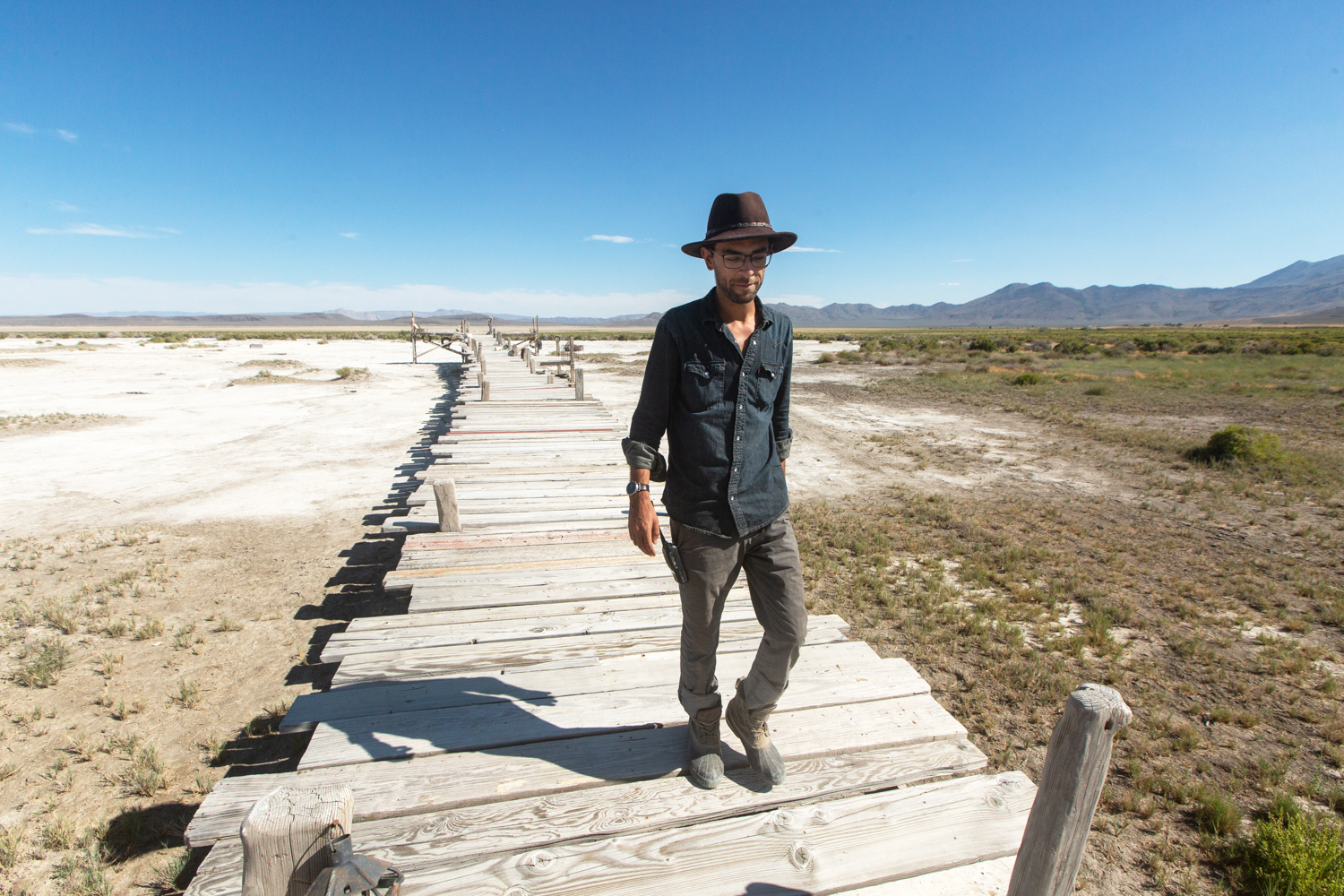
—-
This year, there were about 15 gatherings held at Fly Ranch, from organizational retreats to Fly Guardian trainings, not to mention maybe hundreds of nature walks. Those walks are happening every weekend, Friday through Monday, and upwards of 80 people a week are visiting. All that activity seems to be having a beneficial effect on Gerlach itself — just check out the new menu and cocktail lineup at Bruno’s for evidence. There’s also a popup pizza place near the old train station, and the fruit smoothies at the Miner’s Club, inaugurated last year, are still delicious.
That’s the micro view. The macro is way more ambitious.
The first thing the Burning Man Project did when it acquired the property was to set up a biologist in residence, Lisa Schile-Beers, and over 16 months she cataloged the plant and animal life on the property. “We share the space with hundreds of kinds of birds,” Zac says, “dozens of mammals … it is not the pure tabla rasa of Black Rock City.”
Not at all. Even as we make our way around the property, wild horses sometimes walk, sometimes gallop by around us. One took the opportunity to roll on the ground for a good back scratch in the camping area.
“Fly is a middle space, between the temporary autonomous zone of Black Rock City and what people have referred to as the default world. It’s a place that can exist between the two of those, embracing the freedom of one and some of the pragmatic constraints of the other, and take the best of both to improve each of them,” Zac says.
You might even say that Fly Ranch is the most visible manifestation of Burner culture reaching its arms out to the rest of the world. Art is a significant part of the appeal — in addition to the geyser itself, the site now has the Pier installation, which made its first appearance at Burning Man and which Reno’s Generator group has installed at Fly.
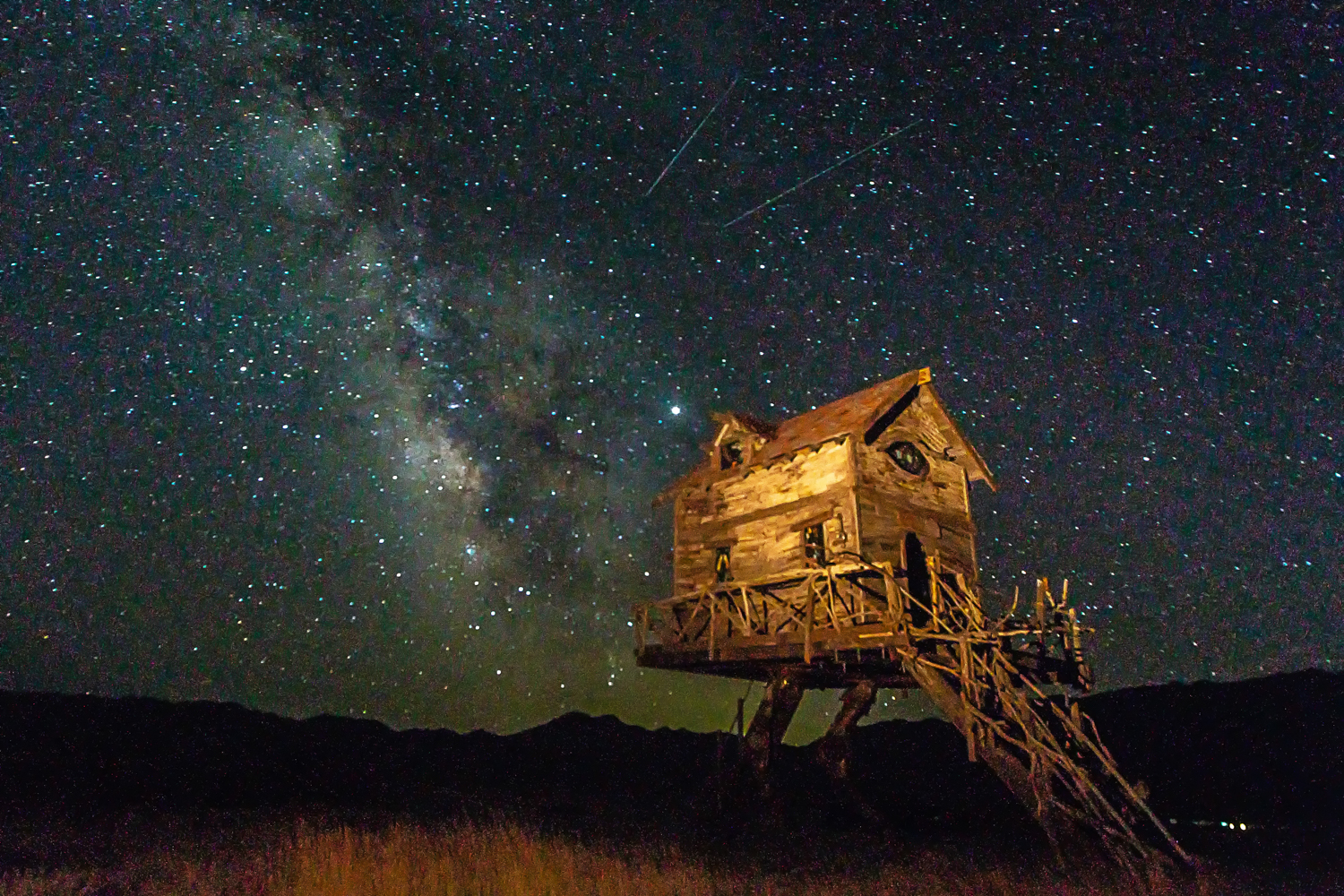
A couple of weeks ago, Jessi Sprocket and her crew installed the Baba Yaga House on a particularly beautiful spot on the ranch, a place where you can watch the sun both rise and set. The front of the house points toward the geyser, and the birdcage deck in back has an expansive view of the entire region.
There’s also a walk-in sauna, gifted by the Art of Steam group from Russia, which also made its debut at Burning Man. This piece will be used next year in a pilot program to help veterans dealing with Post Traumatic Stress Disorder. “They’ll be doing sound healing, they’ll do meditation, they’ll do sauna treatments, they’ll do cold baths,” Zac says.
The site is also envisioned as a testing ground for techniques and environmental solutions that might work at Burning Man, and in the rest of the world, too.
The Milk and Honey camp has gifted the use of its solar array for the 51 weeks of the year that they aren’t using it. These help power 2000-watt and 5000-watt self-contained generators, with the silent power running the campsite. There are plans for a prototype container that would contain 10 or more of the 5k packs running in sequence, enough power for many uses in Black Rock City. Imagine a Burning Man without generators.
And the list of projects goes on: biological toilets that turn human waste into nitrogen-rich compost. Imagine a fruit orchard at Fly Ranch nurtured by effluent from the event. (There were 33 of such toilets in Black Rock City last year; this year there will be 120.)
Burners Without Borders has developed MRUs — Mobile Resource Units containing laser cutters, 3D printers, drill presses and other tools, all of which can be rolled out for disaster relief, as well as providing maker spaces at Fly Ranch.

“We could bring water bottles, we could bring generators, but I don’t think those are necessary components of a powerful Burning Man experience,” Zac says. “We don’t need to have plastic porta potties full of petrochemicals that are pumped by diesel machines transported someplace else. It’s only waste if you waste it.”
All these efforts are meant to help Fly Ranch harness Burning Man’s natural human resources — inventiveness and intelligence — to develop solutions for living on the planet in a sustainable way.
“And it won’t be for just a week, like Burning Man,” Zac says. “As we build the infrastructure, we’ll transition into a new frontier, which is people working for weeks or months. … I think our community is ready for that next challenge, to put our ingenuity and creativity and our values into practice for more than what we do in the city for a week.”
—-
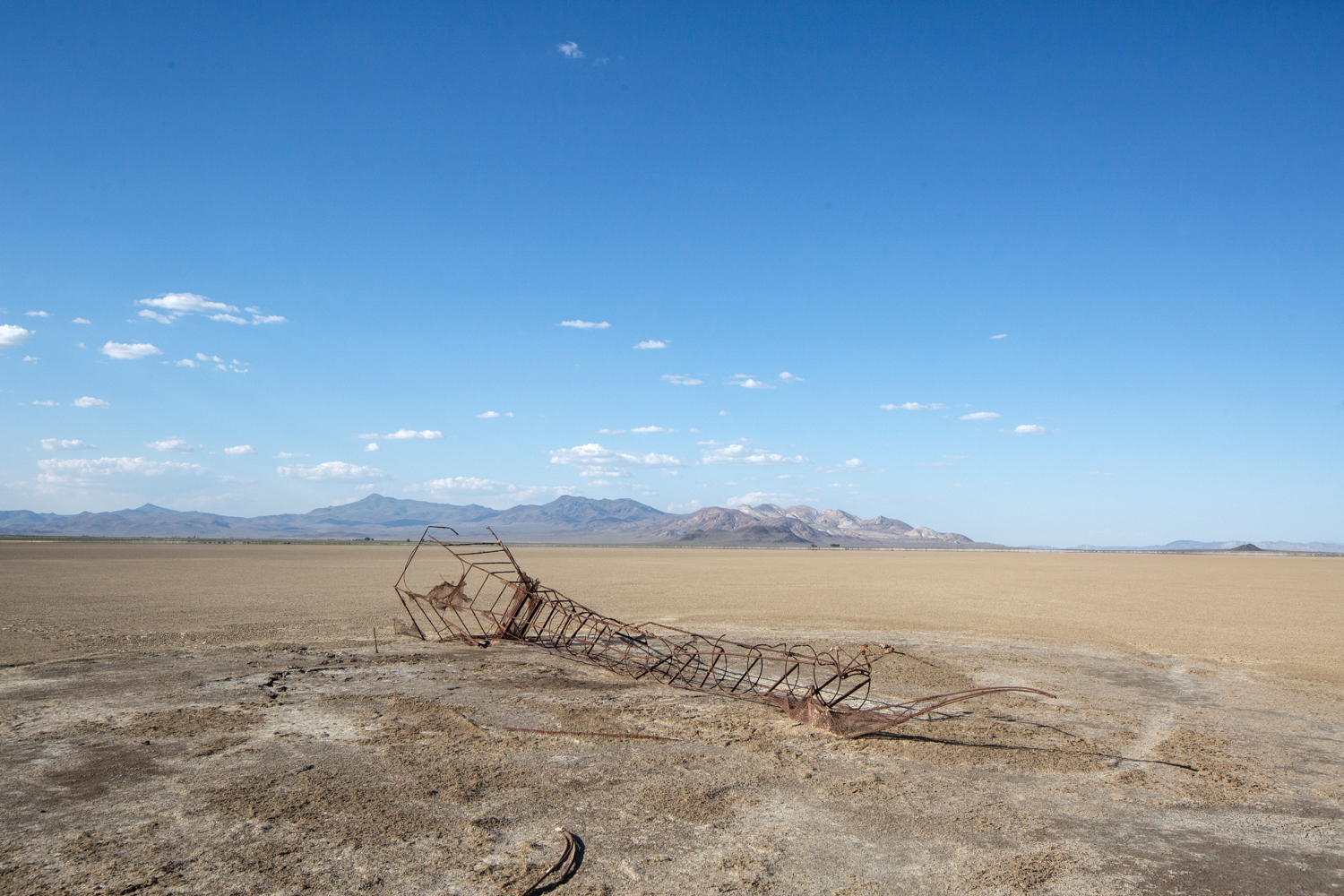
Pepe Ozon’s Daughters of Ishtar tower is still out there on the playa at Fly Ranch. It’s mostly rusted rebar now, but its presence, and the presence of the original Bone Tree and the burn barrels around the Esplanade, all get you to thinking about what once was.
By today’s standards, the event was small, only 10,000 people. But try to picture it — 10,000 wild-eyed art and performance enthusiasts, all gathered out there in the middle of nowhere. Radical Self-Expression and Radical Self-Reliance were paramount. No doubt there was a feeling of power and energy, of something amazing happening. Something that might last.
Well, it HAS lasted. And now there is new art, new experiments, and new directions, out there on the Hualapai Flat, and out there at Fly Ranch. “We have prided ourselves on being temporary,” Zac says. “How do we now think about legacy?”
—
Note: You, too, can visit Fly Ranch. In the off-season, you can go out with the Friends of Black Rock-High Rock on one of their weekend tours.
During Burning Man, the Fly Ranch Project will have a presence at the Burners Without Borders camp at 7:15 and Esplanade. There will be afternoon talks on Tuesday, Wednesday and Thursday, and you can put your name in a hat at the beginning of the program, and the lucky winners will be selected at the end. If your name is selected, you’ll get on a bus right then and there, and off you’ll go to Fly Ranch.
—
Here are some more pics:

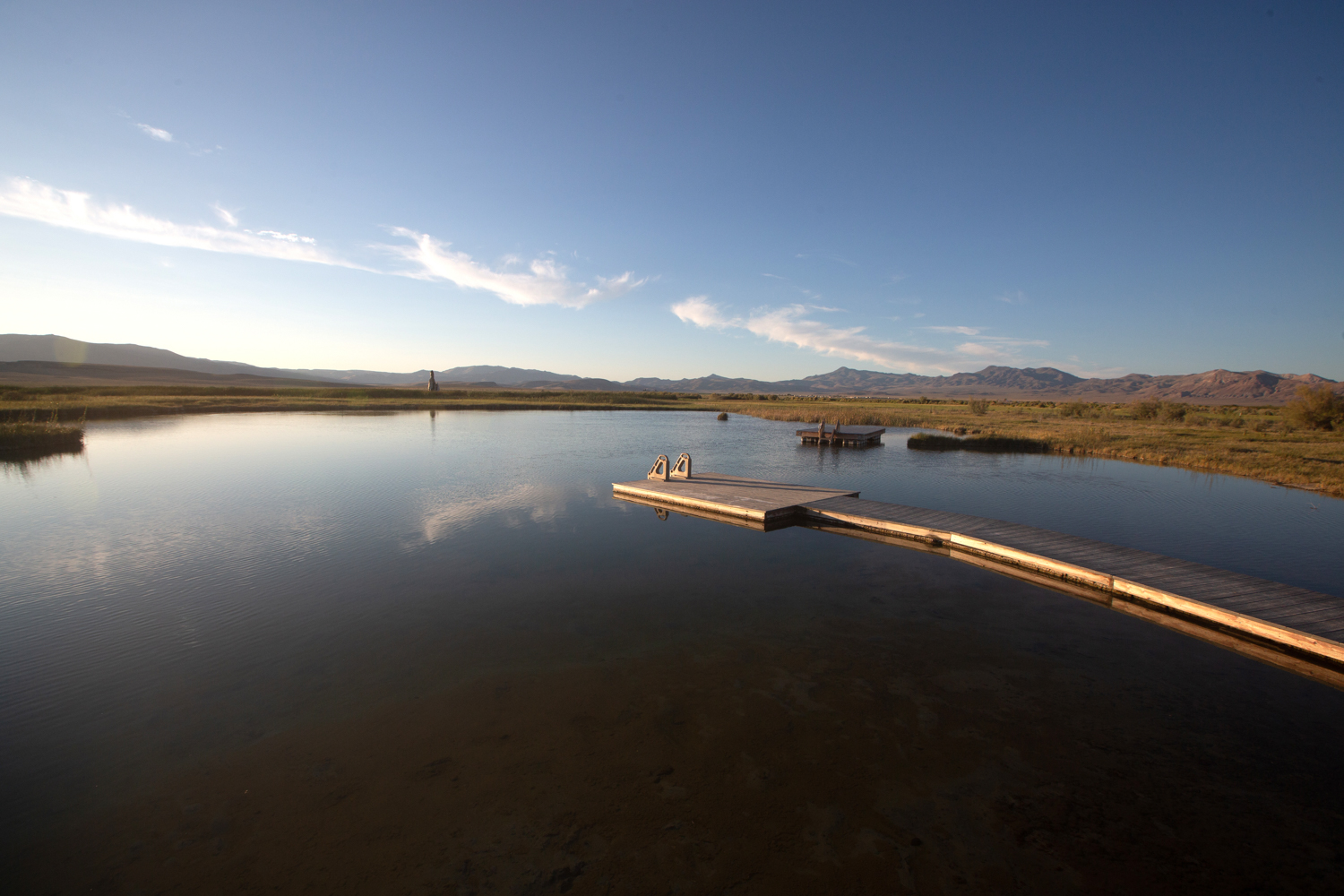

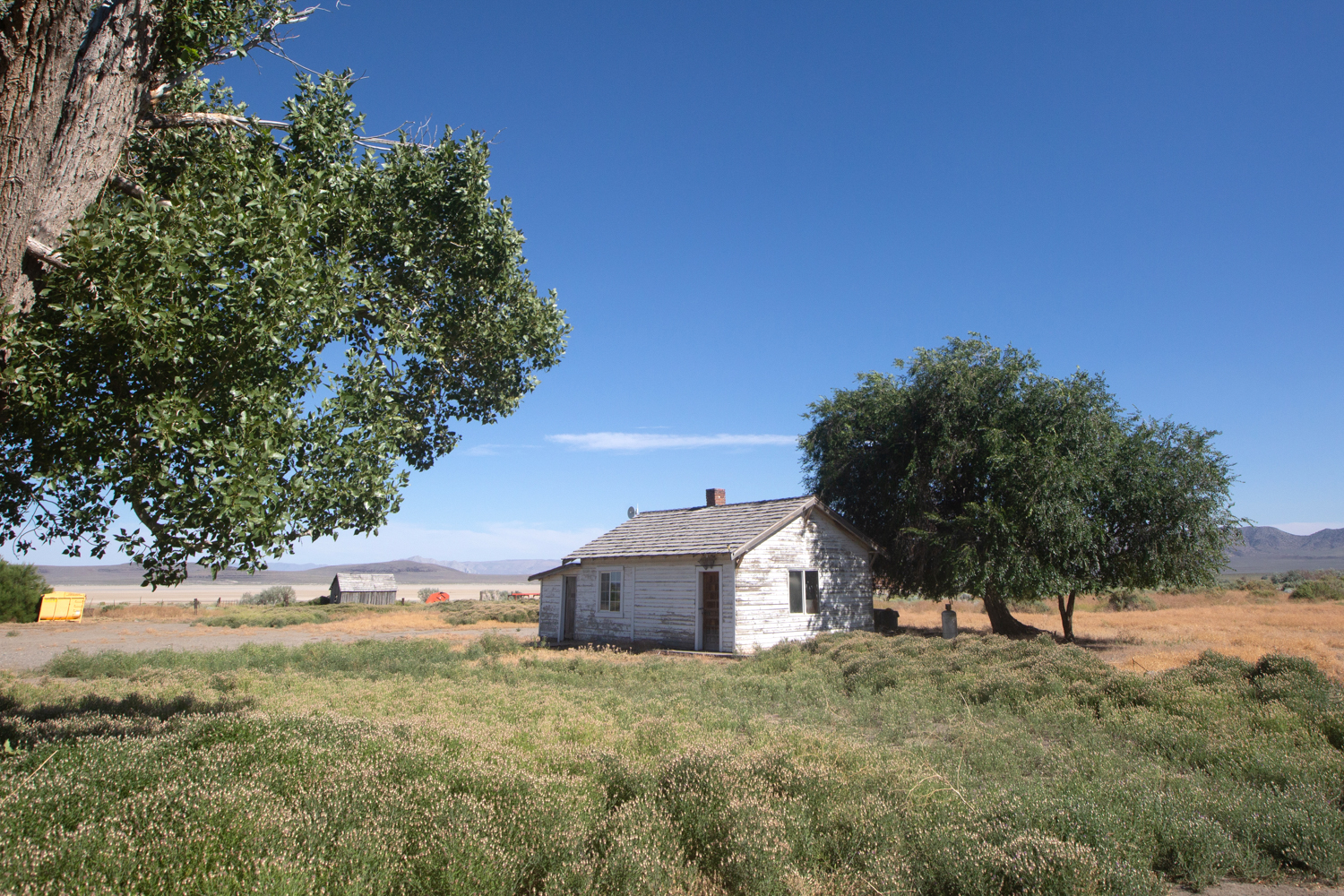

And even more:

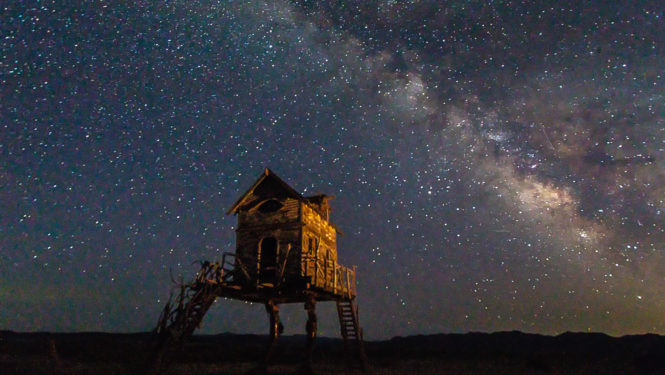

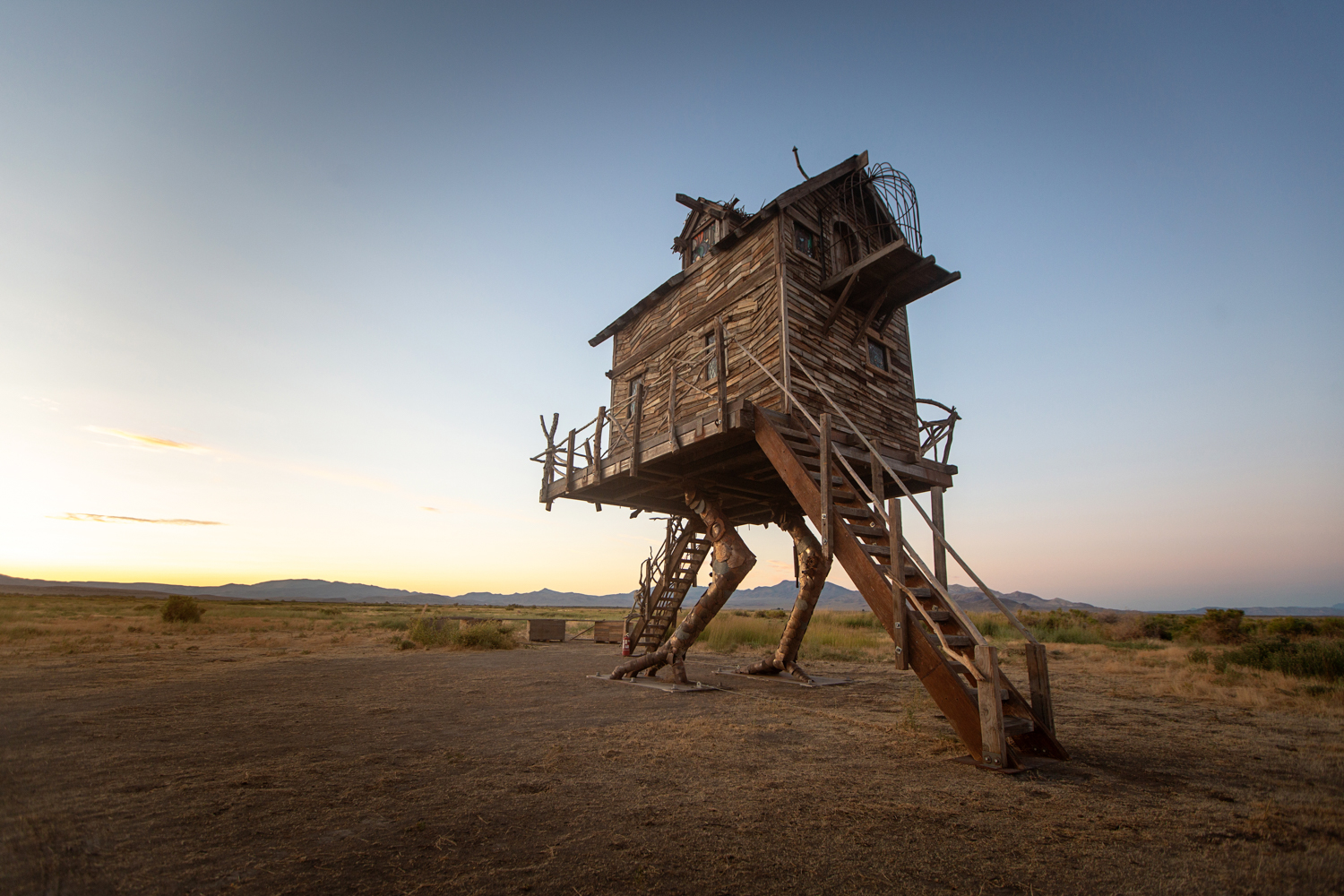

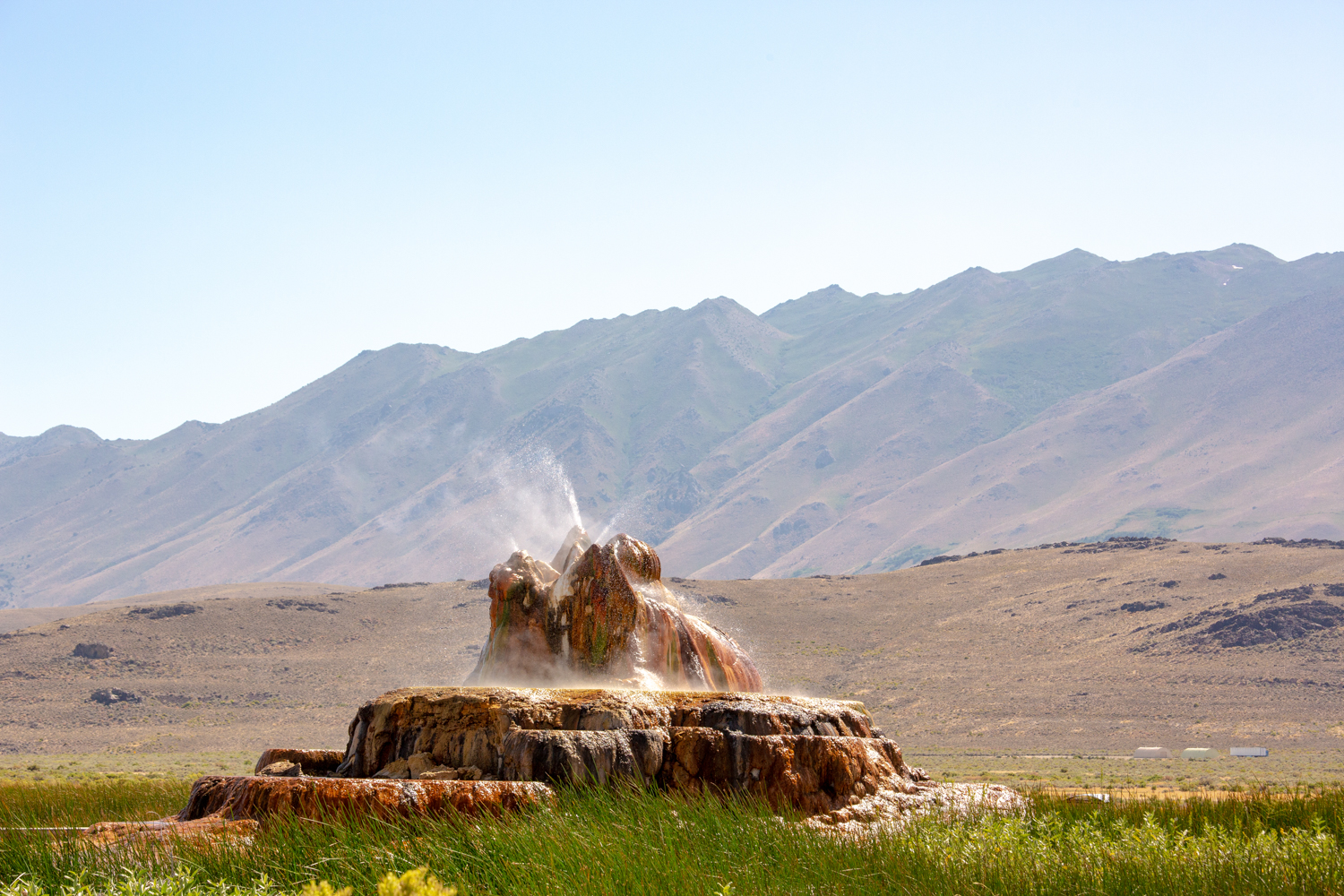
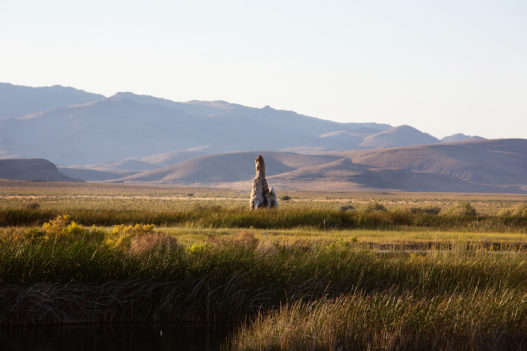

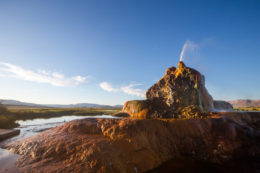
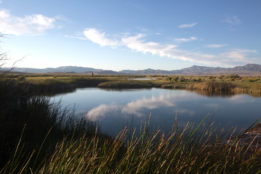
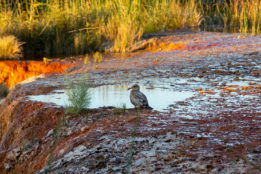
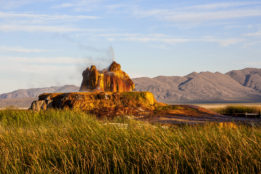
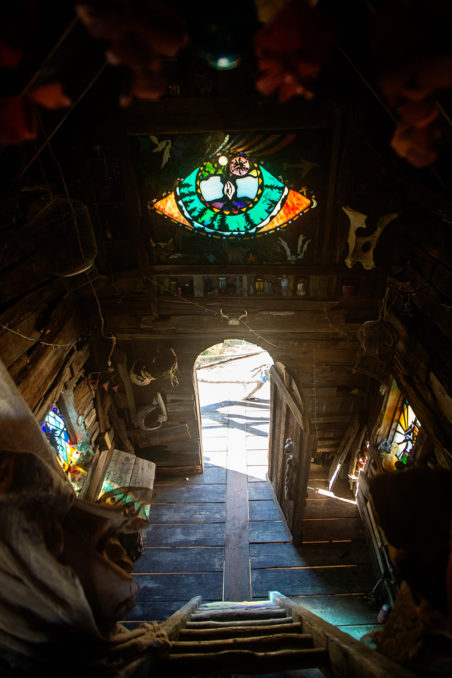
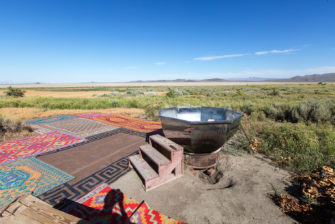
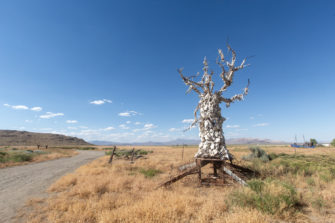

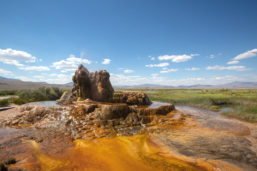
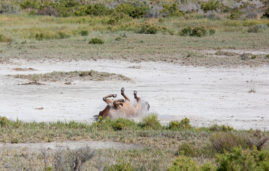
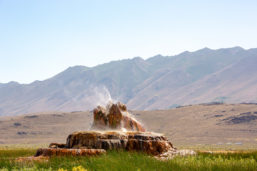
“What’s next for this 3,800 square-foot parcel that Burning Man acquired in 2016…”
I hope that is acres, or y’all paid too much.
Turns out that’s 165 million square feet, which sounds way better than 3,800 acres.
Report comment
hahahah, great catch, thank you!
Fixed it in the copy. Yah, that would have been kind of a steep price
Report comment
heh. its just acres, not square-acres ;-) Great AWESOME writeup about the ranch!
Report comment
I’m happy our beloved Whale Baby, the Narwhal, found a wonderful new home. Thank you to EVERYONE, including Pepe, Shayne, and Terry Pratt and Nicole Charles for the enduring commitment, creativity and love bestowed upon our “Unicorn of the Sea”.
With gratitude and excitement for all that Fly is and all that it will become!
Megs
Report comment
Wonderful write up John! I think the best I’ve read! Great work all…love this unfolding and becoming from the ground up.
When can we do a community long term art build on site?!!!
Report comment
I visited fly ranch in May, thanks to Friends of the Black Rock Desert. It’s a very cool place. The geyser, as you noted, is not natural, but a man-made mistake. It’s got beautiful scenery. I’m glad Burning Man bought it. But it’s frustrating to keep reading all this hint-at-this, hint-at-that, what-are-they-gonna-do sh*t for three years now. Really? You bought the place without a plan? Either just tell us, or ask us all what we want to do with it! I for one would like a place that is privately owned and away from the prying eyes of the BLM in which to stage Burning Man.
Report comment
Hey ChillPill,
There’s a lot happening and none of it is a secret. You can see what we’re up to and how to get involved here: https://flyranch.burningman.org/2019roadmap/
Report comment
John Curley, Thank you for the history&update! Wonderful article & beautiful pictures!
Report comment
This was a beautifully written article and organized in a very engaging fashion. I rarely make out through a whole Jackrabbit Speaks article as I find them overly lengthy, but this one was captivating. Thank you for the detail and the loving tone. Bravo, John Curley!
Report comment
Was Burning Man particularly an LNT event before the return to Black Rock? It would seem odd for the anarchic event it was up to that time, and I remember reading about the last of the old burn scars in deep playa being busted up by Resto circa 2010 (although those were likely due to ignorance rather than indifference).
Report comment
Comments are closed.